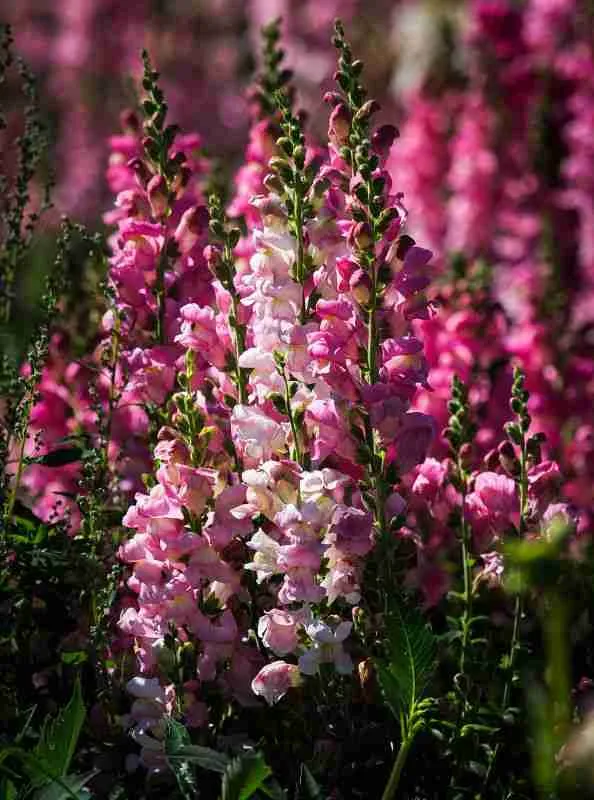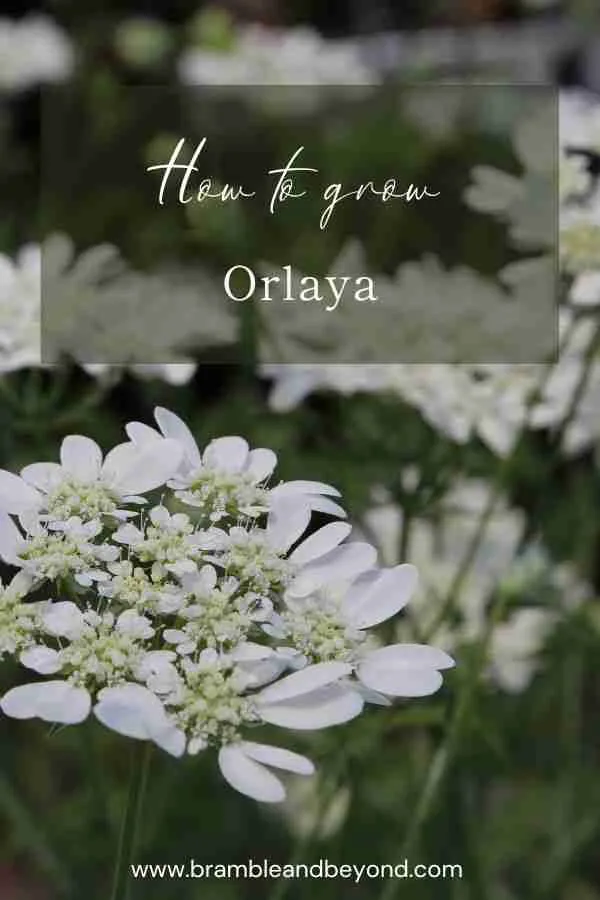Disclosure: This post may contain affiliate links, meaning I get commission if you decide to make a purchase through my links, at no cost to you. Please read my Affiliate Disclosure for more information.
The name snapdragons evokes a nostalgic 70s vibe, conjuring images of rows of short vibrant spikes of colour. But let me tell you, the world of snapdragons has evolved since then. These days, snapdragons (Antirrhinum) have become a favourite among cutting garden enthusiasts, producing some of the most stunning flower spikes you can imagine. So, if you’re ready to embark on a journey of learning how to grow snapdragons, trust me, it’s worth the effort.
Now, I have a confession to make. While I’ve seen spectacular snapdragon flowers, I haven’t quite reached those heady heights in my own garden. My snapdragons tend to be a bit bendy and straggly. This, I’m sure, is due to my lackadaisical approach to staking. However, with each passing year, I strive to improve my staking. But I must admit, there’s something endearing about the crazy shapes my snapdragon stems take on. It adds a touch of whimsy and makes creating floral arrangements so much more fun.
So, if you’re a nature-loving, dirt-under-your-nails kind of woman with exquisite taste, this guide is tailor-made for you.
What are Snapdragon (Antirrhinum)?
Snapdragons (Antirrhinum) are hardy annuals known for their distinctive spike-like blooms that resemble the face of a dragon with its snapping mouth. Personally, I can’t help but see them as whimsical hats for fairies. But hey, that’s just me!
These elegant flowers come in a variety of vibrant colours, including shades of pink, purple, red, yellow, and white. Snapdragon plants are popular for their versatility and are commonly used in floral arrangements and garden borders. They bring a touch of whimsy and elegance to any garden or indoor space, making them a perfect choice for many flower growers.
Now, let’s talk about the varieties of snapdragons that are specifically grown for cut flowers. These beauties have especially tall flower spikes with ruffled blooms in ivory, cherry, pink, yellow, bronze, and peach colours. My personal favourites include Chantilly, Madame Butterfly, Costa, and Potomac. And within each of these varieties, there is an astonishing array of colour choices.
One variety that steals my heart is the double-petaled Madame Butterfly. These blooms are double petaled making them difficult for insects to pollinate, resulting in longer-lasting flowers in the vase.
The different types of varieties are supposed to help provide a longer growing season, such that some prefer to bloom in cooler conditions (so spring and autumn) and others in the warmer conditions (summer). However, I must admit that here in the UK, I haven’t noticed much difference in their blooming patterns. So, if you have limited space, don’t fret! Just find a variety you love and succession sow it to extend the blooming season.

How to grow Snapdragon (Antirrhinum):
Snapdragon seeds are the tiniest seeds imaginable. It’s amazing how such large plants are produced from such tiny specs of dust. But grow they do, however they do take their time about it, so make sure you start them off early.

Plant details:
- Plant type: hardy annual/perennial (to -5C)
- Height: 90-100cm
- Site: full sun
- Sowing Depth: surface sow
- Germination: 10-21 days
- Temperature: 18-20°C
- Days to maturity: 110-120 days
- Plant spacing: 23cm
- Pinch: yes when 10cm tall
- Staking: yes
- Drying: no
- Approx seeds per packet: 50
Currently, I sell our seeds, and other bits and bobs, through Etsy, so the link below will direct you there.

Harvesting and vase life:

Here are a few of my tips for growing snapdragon (Antirrhinum) flowers:
- Snapdragon seeds are tiny so it is easy to over sow. They do grow into fairly large plants, so do try to sow sparingly.
- Snapdragon seeds need moisture and light to germinate, so make sure to surface sow them.
- It takes about 100-120 days for your flowers to mature. If you’re sowing in the spring, start at least 10 weeks before the last frost. I get better results sowing them in autumn as it gives them time to establish themselves.
- Patience is key with Snapdragons, they seem to get stuck as a tiny seedling for ages. I find that transplanting the tiny seedlings to another seed tray (or even to a different space in the same seed tray) seems to trigger a growth spurt.
- Remember, they need their space so when planting them out, plant them at least 20cm apart.
- Want more flowers? Pinch and Propagate. Pinch out the growing tip, once you have 3 sets of true leaves, to encourage more flowering stems on the original plant. By doing this, you’ll encourage more flowers and you can even propagate new plants from the cuttings.
- When it’s time to harvest, cut your flowers when they’re about 1/3 to 1/2 open. Don’t forget to leave 2 sets of leaves to promote more side shoots.
- Harvest them during the cool part of the day, early morning seems preferable. This will help extend their vase life and keep them looking fresh.
- Snapdragon flowers are geotropic? That means they grow towards gravity. This happens both while they grow and once they are cut. So if you want perfectly straight stems make sure you stake them. And once cut, make them feel at home, use tall vases, or wrap them in newspaper, while conditioning them to keep the stems straight.
Growing snapdragons is a delightful journey that allows you to connect with nature and indulge in bringing the beauty inside. By following the step-by-step guide and implementing the tips and tricks shared in this blog post, you can successfully cultivate beautiful snapdragon flowers in your garden. Embrace sustainable practices, unleash your creativity, and enjoy the charm and elegance that snapdragons bring to your outdoor and indoor spaces.
“In every gardener, there is a child who believes in the magic of growing flowers from the ground up.” – Unknown
Hope these tips help you grow gorgeous Snapdragon (Antirrhinum) flowers in your garden!







